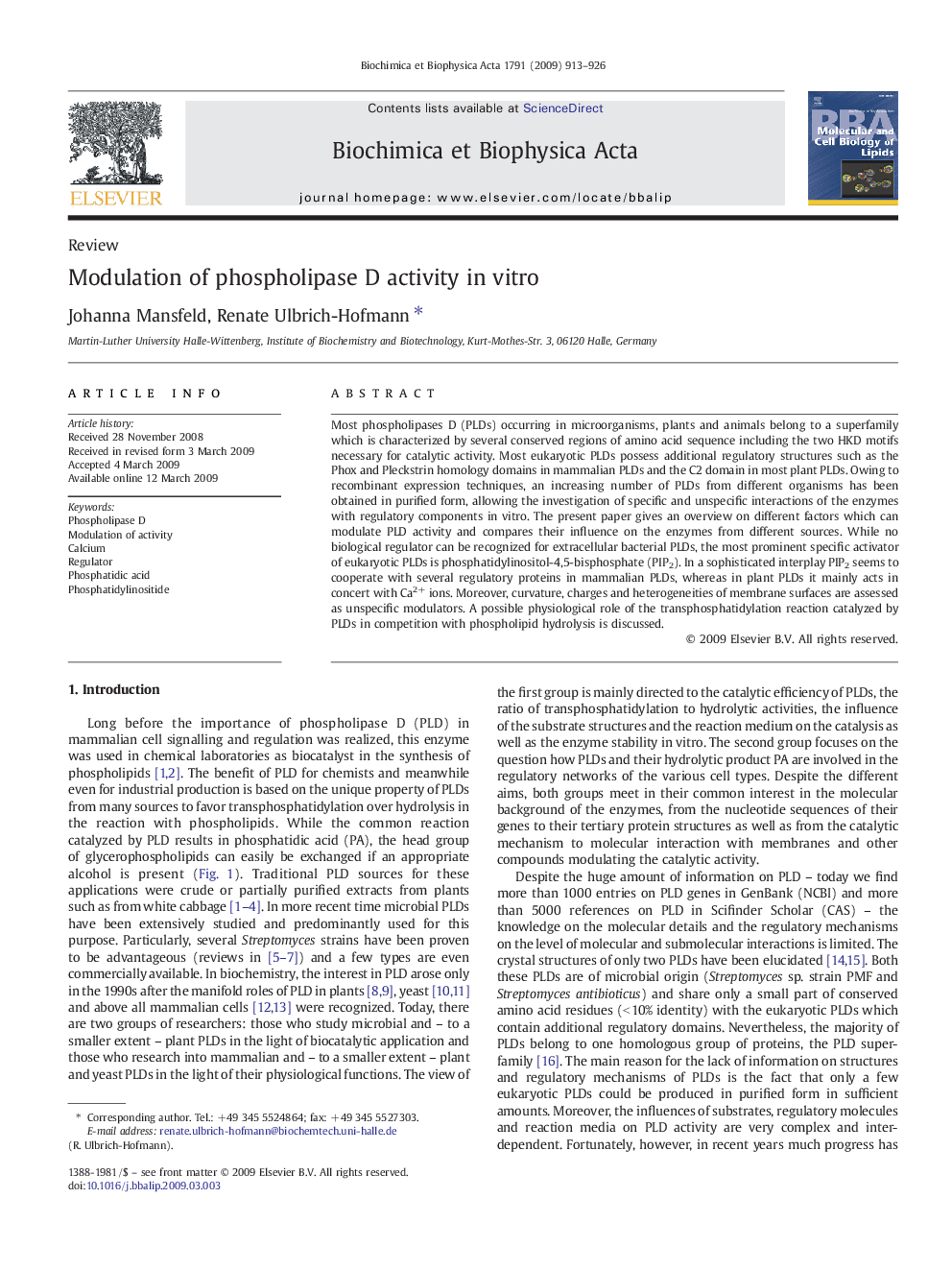| Article ID | Journal | Published Year | Pages | File Type |
|---|---|---|---|---|
| 1949845 | Biochimica et Biophysica Acta (BBA) - Molecular and Cell Biology of Lipids | 2009 | 14 Pages |
Most phospholipases D (PLDs) occurring in microorganisms, plants and animals belong to a superfamily which is characterized by several conserved regions of amino acid sequence including the two HKD motifs necessary for catalytic activity. Most eukaryotic PLDs possess additional regulatory structures such as the Phox and Pleckstrin homology domains in mammalian PLDs and the C2 domain in most plant PLDs. Owing to recombinant expression techniques, an increasing number of PLDs from different organisms has been obtained in purified form, allowing the investigation of specific and unspecific interactions of the enzymes with regulatory components in vitro. The present paper gives an overview on different factors which can modulate PLD activity and compares their influence on the enzymes from different sources. While no biological regulator can be recognized for extracellular bacterial PLDs, the most prominent specific activator of eukaryotic PLDs is phosphatidylinositol-4,5-bisphosphate (PIP2). In a sophisticated interplay PIP2 seems to cooperate with several regulatory proteins in mammalian PLDs, whereas in plant PLDs it mainly acts in concert with Ca2+ ions. Moreover, curvature, charges and heterogeneities of membrane surfaces are assessed as unspecific modulators. A possible physiological role of the transphosphatidylation reaction catalyzed by PLDs in competition with phospholipid hydrolysis is discussed.
